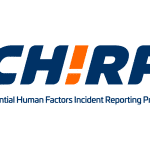FAA soon to release final SFAR for powered-lift aircraft
By Jen Nevans, Vertical
The U.S. Federal Aviation Administration (FAA) is preparing to release a crucial regulation that will help pave the way for the commercialization of eVTOL aircraft in the U.S., according to Christopher Coes, acting under secretary of transportation for policy at the U.S. Department of Transportation.
Speaking at Honeywell’s Advanced Air Mobility (AAM) Summit on Sept. 19, Coes announced that the final special federal aviation regulation (SFAR) for powered-lift pilot certification and operations is expected to be published in the “next month.”
“I think you’ll see it is quite responsive to [industry] comments,” Coes told attendees. “It will come well ahead of certifications that the FAA is working very hard with our manufacturers.”
The SFAR was a hot topic at last year’s summit, where the draft version faced considerable criticism. Industry concerns focused on the certification process for pilots, the requirement for dual flight controls, energy reserves for electric aircraft, and flight simulation training devices.
Many in the industry felt the rules governing pilot certification and operations of a novel technology like powered-lift eVTOLs should be modernized to reflect the unique aspects of electrification and range.
However, at this year’s summit, the mood had shifted toward cautious optimism for the release of the final SFAR.
“There’s great anticipation for the rule, which we’re told is coming in just a few weeks,” said Kristie Greco Johnson, senior vice president of government affairs with the National Business Aviation Association (NBAA). “If the FAA can deliver [the rule] in just a few short weeks, it’ll be a major accomplishment for the agency.”
While Coes contends the final SFAR will be released in the next month, the FAA technically has until Dec. 16 to finalize the regulation, according to the FAA reauthorizaton bill. The same bill also mandated that a notice of proposed rulemaking (NPRM) for unmanned aerial systems (UAS) operating beyond visual line of sight (BVLOS) be issued by Sept. 16. However, the FAA missed that deadline, raising concerns about the SFAR’s timely release.
There is broad consensus that the U.S. faces stiff competition from global players to lead in AAM. With first movers like Joby Aviation and Archer Aviation aiming for a 2025 commercialization of eVTOLs, the pressure is on the FAA to meet expectations.
Globally, major AAM markets, including those in Europe and the United Kingdom, seem to be aligning toward the middle of the decade for mass eVTOL commercialization.
The same can said for Saudi Arabia, as Sulaiman Almuhaimedi, executive vice president of aviation safety and environmental sustainability at the General Authority of Civil Aviation (GACA), said the region is targeting early 2026 to launch operations at a large scale. These operations will start with piloted eVTOLs in remote areas, later expanding into more complex operations, Almuhaimedi said.
Meanwhile, commercialization of eVTOLs in Canada will likely follow closely behind the U.S. and Europe, with Transport Canada taking a more passive approach to eVTOL rulemaking and leaving Europe and the U.S. to handle the bulk of the regulatory work.
“With AAM, we’re taking a step back because we don’t have active applications,” said Ryan Coates, director of the remotely piloted aircraft systems (RPAS) taskforce for Transport Canada, noting that the agency will likely look to validate the type certificates that are first issued by the FAA or EASA.




